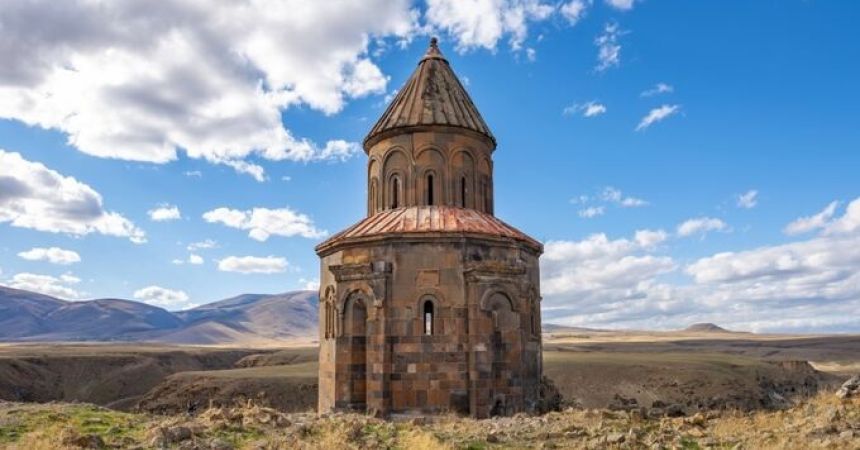
The Historical Legacy of Ertugrul
In recent years, the name Ertugrul has gained international fame thanks to the Turkish television series Dirilis: Ertugrul, a dramatized retelling of the life of the warrior who played a crucial role in laying the foundation for one of the most powerful empires in history, the Ottoman Empire. However, beyond the realm of fiction, Ertugrul’s story is one of bravery, leadership, and vision. His contributions to the history of Turkey and the formation of a vast empire that spanned centuries are profound. This blog delves into the life, times, and legacy of Ertugrul, exploring his real historical background and significance to Turkey and the world.
Who Was Ertugrul?
Ertuğrul was a 13th-century Turkic warrior, the father of Osman I, who would go on to establish the Ottoman Empire. He is widely regarded as a central figure in the early history of the Turks and a symbol of resilience and leadership. The exact dates of his birth and death remain unknown, but historians generally place his life around the early to mid-13th century.
Ertugrul belonged to the Kayi tribe, one of the many branches of the Oghuz Turks. The Oghuz Turks were nomadic people who originated in Central Asia and migrated westward over centuries, seeking new lands to settle. The Kayı tribe, in particular, was known for its military prowess and strong leadership, qualities that Ertugrul would embody in his lifetime.
Early Life and Migration
Ertuğrul’s early life remains somewhat shrouded in mystery due to the limited historical records. What is known is that his tribe, under his father Suleyman Shah, faced increasing pressure from Mongol invasions in Central Asia. The Mongols, under the leadership of Genghis Khan, were expanding their empire across vast territories, displacing many Turkic tribes in the process. The Kayi tribe, along with others, were forced to migrate westward, eventually settling in Anatolia, modern-day Turkey.
During this period of migration, the Kayi tribe faced numerous challenges, including hostile encounters with other tribes, harsh environmental conditions, and the struggle to find a stable territory to call home. It was during this time of upheaval that Ertuğrul began to emerge as a leader, guiding his people through these difficult circumstances with a combination of strategic foresight and military strength.
Ertugrul’s Role in Establishing a New Home in Anatolia
Ertugrul’s reputation as a leader grew when, according to legend, he came to the aid of the Seljuk Sultan, Alaeddin Keykubad I, during a battle against the Byzantine Empire. The story goes that Ertugrul and his small band of warriors arrived at a crucial moment and tipped the scales in favor of the Seljuks, leading to their victory. As a reward for his loyalty and bravery, the Seljuk Sultan granted Ertugrul control over a small territory in the northwest of Anatolia, near the Byzantine border.
This territory, located around the town of Sogut, became the heart of the Kayi tribe's new homeland. Ertugrul's settlement in this strategically important region marked the beginning of what would eventually become the Ottoman Empire. The proximity to the Byzantine Empire placed Ertugrul and his tribe in a position of constant vigilance and military readiness, but it also offered opportunities for expansion and consolidation of power.
Ertugrul’s Leadership and Vision
Ertugrul’s leadership was defined by his ability to navigate the complex political landscape of Anatolia. The region was a patchwork of competing powers, including the Byzantine Empire, the Seljuk Sultanate, and various Turkic tribes. Ertugrul managed to maintain a delicate balance of alliances and military actions, ensuring the survival and prosperity of his people.
One of the key aspects of Ertugrul's leadership was his vision for the future. He understood the importance of establishing a stable and prosperous base from which his people could grow. This vision laid the groundwork for his son, Osman I, to expand the territory and eventually create the Ottoman Empire. Ertugrul's foresight in choosing Sogut as a base of operations and his diplomatic skills in forging alliances with both the Seljuks and neighboring tribes were critical to the long-term success of his people.
Ertugrul’s Military Campaigns
While much of Ertugrul's life remains shrouded in legend, it is clear that he was a formidable military leader. His role in defending his people from external threats, particularly the Byzantines, solidified his status as a warrior-chief. Ertugrul led his people in numerous skirmishes and battles, expanding the Kayi tribe's influence and securing its borders.
Ertugrul's campaigns were characterized by his use of guerilla tactics and his deep understanding of the terrain. His ability to outmaneuver larger and more established forces, such as the Byzantine army, allowed him to gain a foothold in the region. This military prowess earned him the respect of both his allies and his enemies.
The Importance of Sogut
Sogut, the small town granted to Ertugrul by the Seljuk Sultan, holds a special place in the history of the Ottoman Empire. It was here that Ertugrul established his base of operations, and it became the birthplace of the Ottoman dynasty. The location of Sogut, on the frontier between the Seljuk and Byzantine empires, was crucial. It allowed the Kayı tribe to engage in both trade and warfare, maintaining a delicate balance between diplomacy and military action.
Sogut's strategic position also facilitated the eventual expansion of the Ottoman Empire. From this base, Osman I was able to launch campaigns that would expand the Ottoman territories, laying the foundations for what would become one of the most powerful empires in history.
Ertugrul’s Legacy: The Birth of the Ottoman Empire
While Ertugrul himself did not live to see the creation of the Ottoman Empire, his role in laying the groundwork for its establishment is undeniable. His leadership, military success, and strategic foresight allowed his son, Osman I, to build on the foundations he had laid.
Osman I and the Rise of the Ottomans
Osman I, Ertuğrul's son, would go on to establish the Ottoman Empire, which would last for over 600 years and become one of the most powerful and influential empires in history. Osman inherited his father's strong leadership qualities and expanded the territory controlled by the Kayi tribe. He declared independence from the Seljuks and began to consolidate power in the region, eventually proclaiming himself the ruler of a new state—the Ottoman Empire.
Ertugrul’s legacy is not only in the physical territories he secured but also in the values he passed down to his descendants. His sense of justice, his commitment to his people, and his vision for the future of the Kayi tribe became central to the identity of the Ottoman rulers who followed him.

The Symbolism of Ertugrul in Turkish History
In Turkish history, Ertugrul is more than just a historical figure—he is a symbol of resilience, leadership, and the power of unity. His story represents the ability of a small group of people to overcome adversity and build something enduring. In many ways, Ertugrul embodies the ideal qualities of a leader: bravery, wisdom, and a deep sense of duty to his people.
Ertugrul’s life and legacy have been celebrated in Turkish culture for centuries. His tomb in Sogut remains a site of pilgrimage for many Turks, and his story has been passed down through generations as an example of what it means to lead with honor and vision.
The Modern Revival of Ertuğrul’s Story: Dirilis: Ertugrul
In recent years, Ertugrul’s story has gained international attention thanks to the television series Dirilis: Ertugrul (Resurrection: Ertugrul), which aired from 2014 to 2019. The series, produced by Turkish state broadcaster TRT, dramatizes the life of Ertugrul and his struggle to establish a foothold for his people in Anatolia. The show became a massive success not only in Turkey but also in countries across the Middle East, South Asia, and even in parts of Europe and North America.
Historical Accuracy vs. Artistic License
While Dirilis: Ertugrul has been praised for bringing Ertugrul’s story to a global audience, it is important to note that the series takes significant artistic liberties with the historical narrative. The show combines historical facts with elements of fiction and fantasy, creating a more dramatic and engaging storyline.
However, despite these embellishments, the core of Ertugrul’s story remains intact: his leadership, his military prowess, and his vision for the future of his people. The series has also helped to renew interest in Turkish history, particularly the early period leading up to the establishment of the Ottoman Empire.
Ertugrul’s Global Impact
The global popularity of Diriliş: Ertugrul has led to a renewed interest in the history of the Ottoman Empire and the role of Ertugrul in its foundation. The show has been particularly popular in countries with large Muslim populations, where Ertugrul’s story resonates as a tale of Islamic leadership, justice, and resilience.
In addition to its cultural impact, the show has also had a significant economic impact, boosting tourism to Turkey, particularly to sites associated with Ertuğrul and the early Ottoman period. Sogut, where Ertugrul is buried, has become a popular destination for both Turkish and international visitors, many of whom are fans of the show.
Ertugrul’s Enduring Legacy in Turkey Today
Ertugrul’s legacy continues to be celebrated in Turkey today. His story is taught in schools, and his tomb in Söğüt is a place of national pride. The values that Ertuğrul embodied—courage, justice, and leadership—are central to the Turkish national identity, and his contributions to the founding of the Ottoman Empire are seen as a pivotal moment in Turkish history.
Cultural and National Identity
For many Turks, Ertugrul represents a key figure in their cultural and national identity. His story is a reminder of the resilience and strength of the Turkish people, particularly during times of adversity. Ertugrul’s leadership in the face of external threats, his ability to unify his people, and his vision for the future are qualities that continue to inspire.
Tourism and Historical Preservation
In recent years, there has been a growing effort to preserve and promote the historical sites associated with Ertugrul and the early Ottoman period. The town of Sogut, in particular, has become a focal point for these efforts, with plans to develop the area into a major cultural and historical Turkey tourism destination. The annual celebrations held in Sogut to commemorate Ertugrul attract thousands of visitors, both from Turkey and abroad.
Experience Ertugrul’s Epic Tour in Turkey
Ertugrul, though a figure whose life is partly shrouded in legend, holds an undeniable place in the history of Turkey and the wider world. His role in laying the foundations for the Ottoman Empire, his leadership of the Kayi tribe, and his vision for the future have left a lasting legacy. Today, his story continues to inspire people around the world, thanks in part to modern depictions in popular media, but also because of the timeless qualities of courage, justice, and resilience that he represents.



